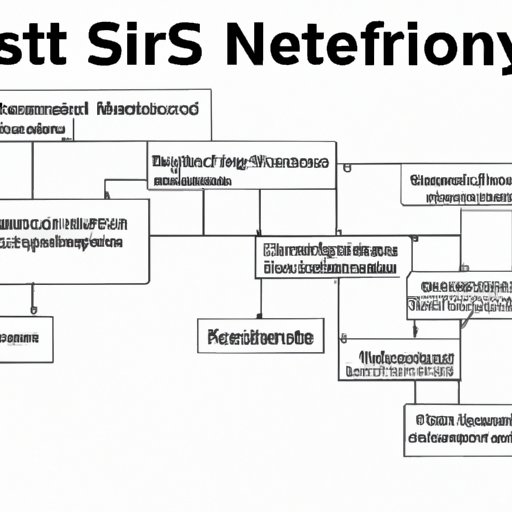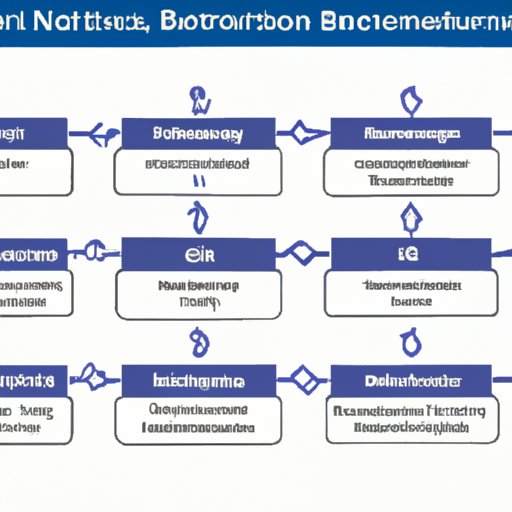Introduction
The National Institute of Standards and Technology (NIST) has developed the NIST Cybersecurity Framework (CSF) to help organizations protect their networks and data from cyber threats. The NIST CSF is a set of best practices and guidelines designed to help organizations create a secure environment for their operations. It provides a comprehensive approach to managing cybersecurity risk through the identification, assessment, and mitigation of security vulnerabilities.
A. Definition of NIST Cybersecurity Framework
The NIST Cybersecurity Framework (CSF) is an industry-standard, voluntary framework for managing cybersecurity risk. It was created by the U.S. Department of Commerce’s National Institute of Standards and Technology (NIST) to provide organizations with guidance on how to protect their systems and data. The framework consists of five core functions—Identify, Protect, Detect, Respond, and Recover—that are designed to help organizations establish and maintain secure environments.
B. Overview of Benefits, Components, and Use Cases
The NIST Cybersecurity Framework provides many benefits to organizations, including improved protection against cyber threats, enhanced visibility into their security posture, and increased compliance with regulatory requirements. Additionally, the framework helps organizations identify and prioritize security risks, as well as develop strategies for mitigating those risks. The framework also offers several components that can be used to improve an organization’s security posture, such as threat intelligence, incident response plans, and security automation tools.

Exploring the NIST Cybersecurity Framework
A. What is it and How Can You Use It?
The NIST Cybersecurity Framework is a set of best practices and guidelines for organizations to use when developing and implementing their cybersecurity program. It includes five core functions—Identify, Protect, Detect, Respond, and Recover—that provide organizations with a comprehensive approach to managing cybersecurity risk. The framework also includes categories and subcategories of security controls, as well as guidance on how to implement those controls.
Organizations can use the NIST Cybersecurity Framework to identify and assess security vulnerabilities, prioritize security investments, and develop strategies for mitigating cyber risks. Additionally, the framework can be used to develop detailed plans for responding to security incidents, as well as to monitor and maintain a secure environment.
B. Beginner’s Guide to the NIST Cybersecurity Framework
The NIST Cybersecurity Framework consists of five core functions—Identify, Protect, Detect, Respond, and Recover—each of which is designed to help organizations manage their cybersecurity risk. These functions provide organizations with a comprehensive approach to identifying and addressing security vulnerabilities, as well as developing plans for responding to security incidents.
The Identify function helps organizations understand their current security posture by taking an inventory of their assets and assessing their security vulnerabilities. The Protect function focuses on preventing security incidents by implementing appropriate controls and processes. The Detect function allows organizations to detect security incidents in a timely manner. The Respond function enables organizations to respond quickly and effectively to security incidents. Finally, the Recover function helps organizations restore normal operations after a security incident.
Implementing the NIST Cybersecurity Framework
A. What You Need to Know
Implementing the NIST Cybersecurity Framework requires organizations to have a clear understanding of their security posture and a comprehensive plan for managing their cybersecurity risk. Organizations should first take an inventory of their assets and assess their security vulnerabilities. They should then develop a plan for implementing appropriate controls and processes to prevent security incidents. Additionally, they should create a plan for detecting, responding to, and recovering from security incidents.
Organizations should also consider implementing automated tools to help them monitor their security posture and detect potential threats. Additionally, they should develop detailed plans for responding to security incidents and training their employees on proper security procedures.
B. Applying the NIST Cybersecurity Framework in Your Organization: A Step-by-Step Guide
Organizations can apply the NIST Cybersecurity Framework to their operations by following these steps:
- Take an inventory of all assets and assess their security vulnerabilities.
- Develop a plan for implementing appropriate controls and processes to prevent security incidents.
- Create a plan for detecting, responding to, and recovering from security incidents.
- Implement automated tools to help monitor their security posture and detect potential threats.
- Develop detailed plans for responding to security incidents and train employees on proper security procedures.
- Regularly review and update the security posture and plans.
Conclusion
of Benefits, Components, and Use Cases
The NIST Cybersecurity Framework provides organizations with a comprehensive approach to managing their cybersecurity risk. The framework consists of five core functions—Identify, Protect, Detect, Respond, and Recover—that provide guidance on how to protect networks and data from cyber threats. Additionally, the framework includes categories and subcategories of security controls, as well as guidance on how to implement those controls.

B. Overview of the NIST Cybersecurity Framework
The NIST Cybersecurity Framework is a set of best practices and guidelines for organizations to use when developing and implementing their cybersecurity program. It includes five core functions—Identify, Protect, Detect, Respond, and Recover—that provide organizations with a comprehensive approach to managing cybersecurity risk. Additionally, the framework includes categories and subcategories of security controls, as well as guidance on how to implement those controls.

C. Recommendations for Implementing the NIST Cybersecurity Framework
Organizations should take an inventory of their assets and assess their security vulnerabilities. They should then develop a plan for implementing appropriate controls and processes to prevent security incidents. Additionally, they should create a plan for detecting, responding to, and recovering from security incidents. Organizations should also consider implementing automated tools to help them monitor their security posture and detect potential threats, as well as develop detailed plans for responding to security incidents and train their employees on proper security procedures.
The NIST Cybersecurity Framework provides organizations with a comprehensive approach to managing their cybersecurity risk. By following the steps outlined above, organizations can ensure that their networks and data are protected from cyber threats.
(Note: Is this article not meeting your expectations? Do you have knowledge or insights to share? Unlock new opportunities and expand your reach by joining our authors team. Click Registration to join us and share your expertise with our readers.)
